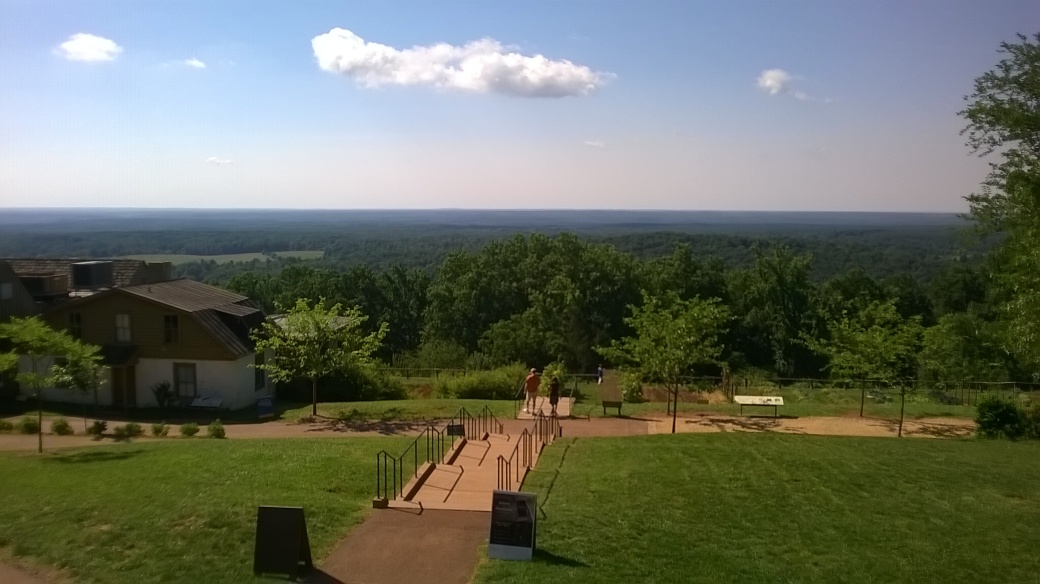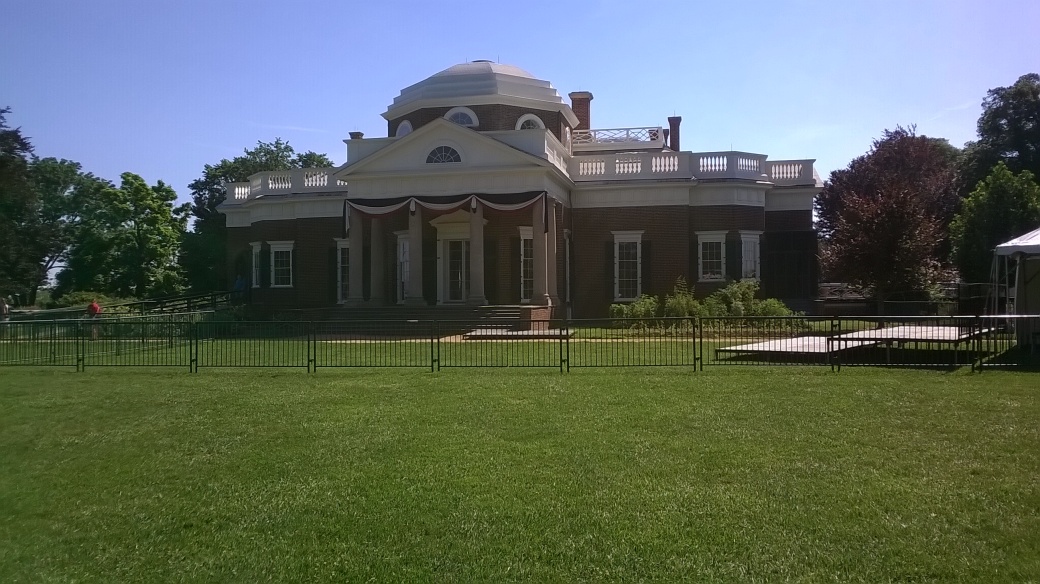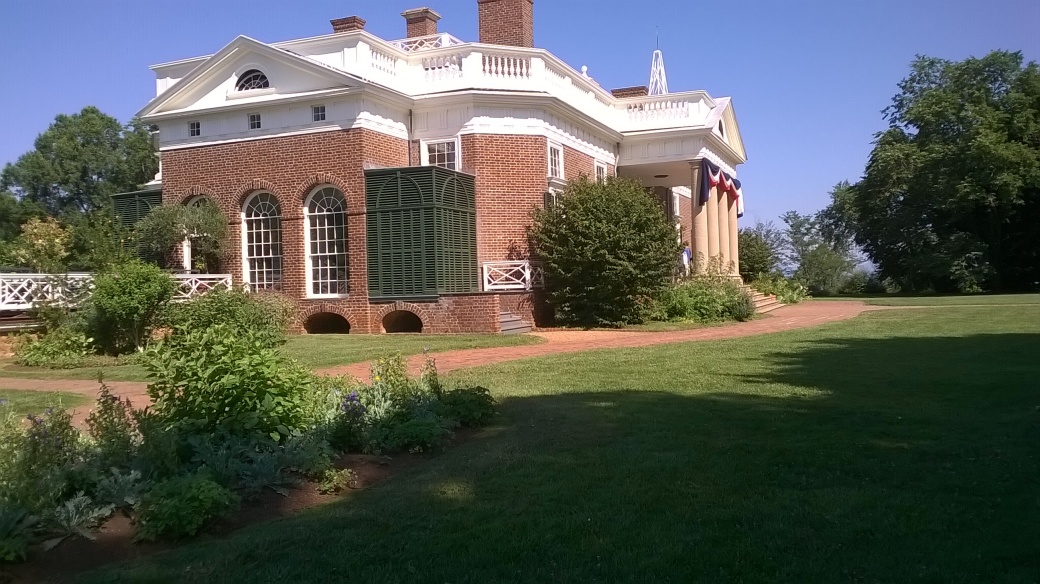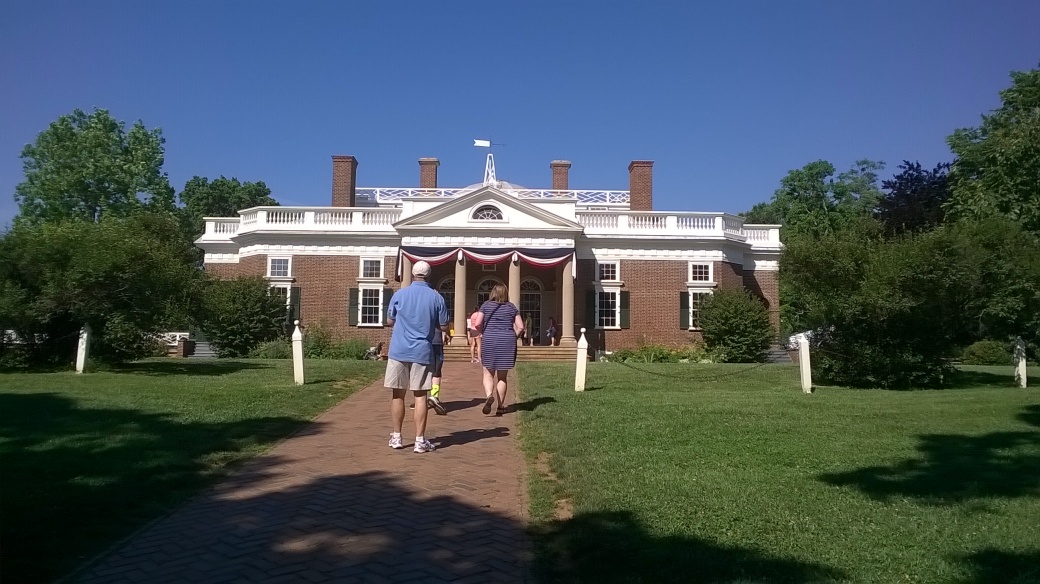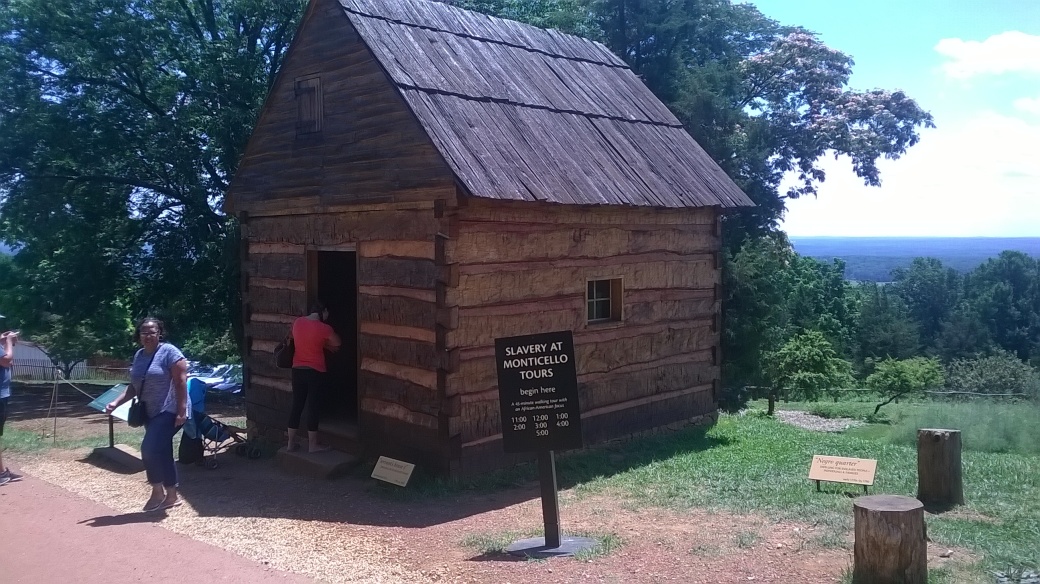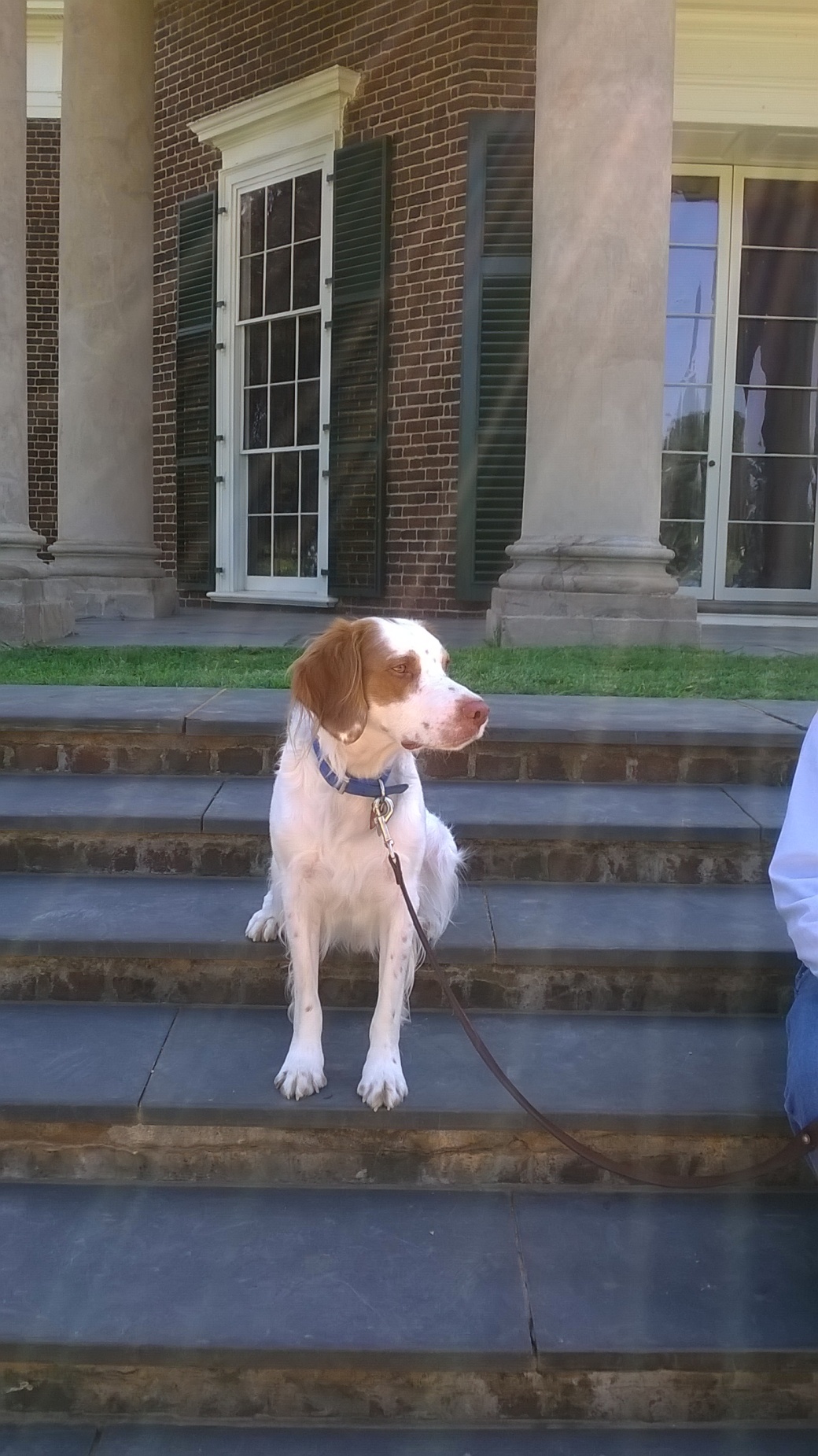A ROCKING CHAIR ON THE POTOMAC
As I sat rocking slowly in my chair gazing out at the Potomac River, the air which had been so still and hot began to move as a breeze stirred and I could not believe I was there at this magical place. I was actually sitting on the porch looking at the Potomac River in the same location as George Washington and as I sat there I kept thinking how many times Mr. Washington probably did the same thing, watching the river go by. It is shady and pleasant. I was also thinking I could not believe how big the river was.

I remember hearing a story of a time during the Revolutionary War while the General was off directing the troops a British War ship came up the river and demanded supplies, instead of denying the British their wishes, the manager of Mount Vernon gave them the supplies they wanted and they left without ravaging the place or setting it on fire. It’s possible that the captain didn’t know it was George Washington’s home but either way the house and farm was spared. Later when the manager told George Washington what happened the General was angry and said “ I would rather see my beloved home burned to the ground than serve the enemy one crumb of bread” Quote unquote ( I cannot say I have that statement 100% percent accurate but one of the things that stuck in my mind was how did that big ship get up that river and now I know, it a huge river!

I am glad that the manager saved the General’s home and it still exists to this day for people to see it..To see this place, to know George Washington lived here, loved this place and every stone he touched, and the desk he wrote at, it all brought it to life, the barns where he kept his horses and the very bed he slept in and where he died.
We went to Mount Vernon, George Washington’s home on July 3rd 2016. It was such an exceptional experience to walk up the hill and come around the corner and there the house sits surrounded by outbuildings and you cannot be sure what to think. It is both larger and smaller than you think it will be and one of the things I noticed it was not white! It is white when it is freshly painted but over time it becomes a more off white or creamy tan color. Even though it looks like its stone blocks the structure of the house it is actually post and beam with siding made to look like a masonry house. The house is painted with sand mixed in to give it the rough texture which resembles brick work.
The house sits on a slight hill above the Potomac river and the view from that side of the house is just spectacular. I can see why George Washington loved it so much there.
Surrounding the house is outbuildings such as the kitchen, various sheds and servants and slaves quarters and many many gardens. There is stables with some horse drawn vehicles inside, only a few actually belonged to George Washington. In truth much of the items in the home, etc. are reproductions of what the family might have had and as closely as can be reproduced based on what information is available such as records kept by George Washington himself.



The inside of the house was special but it is a guided tour and you are herded through much quicker than I thought, I so wanted to look at everything longer but it was unique to see where he had his desk and the bedroom where he slept and where he died. Unfortunately no one is allowed to take photos inside, of course, you can buy post cards and there is some photos on the internet to look at but I have chosen not to try to post those here.
If you take a trail from the house to a low lying area is a reproduction farm, to represent the actual workings of George Washington’s plantation and how it was worked. There is sheep and other animals and presentations of period crafts such as blacksmithing. There is also a round threshing barn, that was built as an exact replica of one that General Washington had on his place. The horses would walk on top of the wheat and go around and around and the wheat would fall through the slits in the floor and thereby separating the wheat from the chaf.


I enjoyed seeing the stables and walking around in the back where the paddocks were, I could just imagine the horses running loose and Washington’s horse Nelson raising his head and nickering softly to his master.
I did not want to leave this special place but I had t continue on the amazing road trip we were taking.


